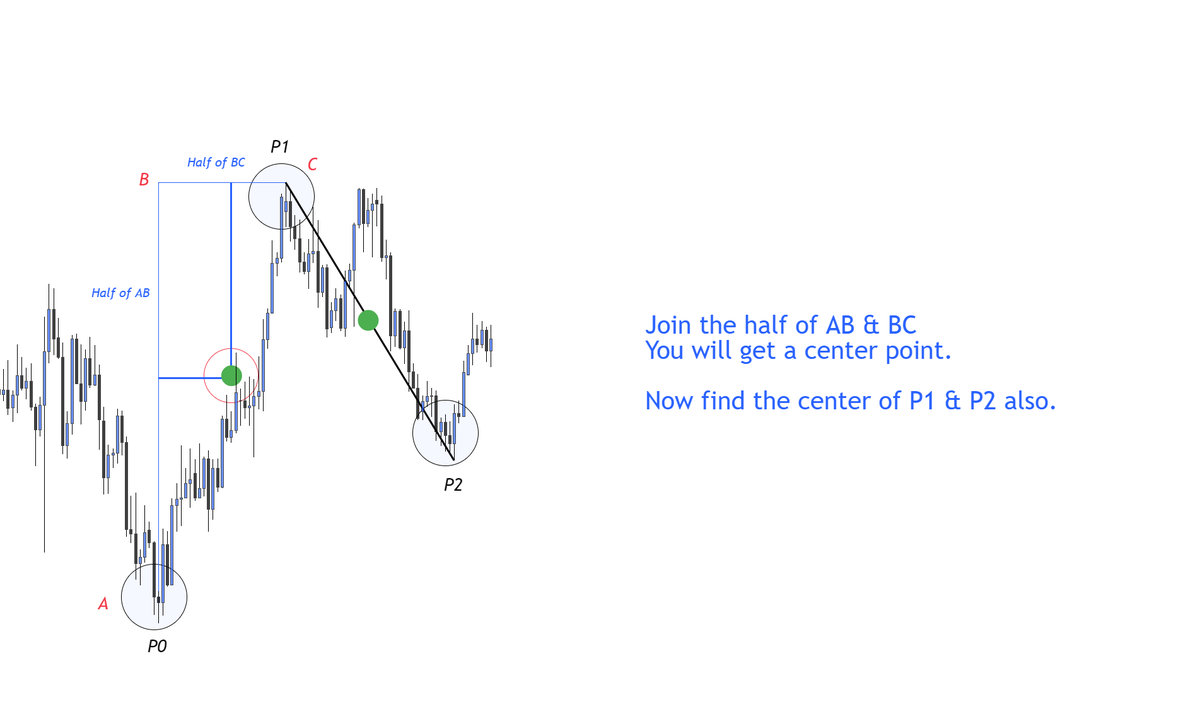Introduction to Andrew’s Pitchfork 🧵
Andrew’s pitchfork is not very popular like the other tools but I have used it for several years and it works like a gem.
Let's get started.
1/
Andrew’s pitchfork is not very popular like the other tools but I have used it for several years and it works like a gem.
Let's get started.
1/

Andrew's Pitchfork is used to determine a potential trading range for an asset's price when it is in an uptrend or downtrend, and also to forecast when an asset is going to reverse its direction.
•History
•The median line theory
•The Pitchfork
•Schiff Pitchfork
•Trading
2/
•History
•The median line theory
•The Pitchfork
•Schiff Pitchfork
•Trading
2/
History
Dr. Alan H. Andrews created the Andrews Pitchfork in the 1960s. The pitchfork was one of the sets of methods he developed. Originally it was called the median line study, but because of how it looked on a chart, it quickly earned the name "pitchfork."
3/
Dr. Alan H. Andrews created the Andrews Pitchfork in the 1960s. The pitchfork was one of the sets of methods he developed. Originally it was called the median line study, but because of how it looked on a chart, it quickly earned the name "pitchfork."
3/
The median line theory
The median line is a line of force that shows the slope of price as it moves forward through time. It's the basis for Andrews Pitchfork.
a) Pivot points
b) Drawing the median line
4/
The median line is a line of force that shows the slope of price as it moves forward through time. It's the basis for Andrews Pitchfork.
a) Pivot points
b) Drawing the median line
4/
a) Pivot points:
Pivot points are used to judge the direction of a price and probable levels of support and resistance.
5/
Pivot points are used to judge the direction of a price and probable levels of support and resistance.
5/

b) Drawing the median line:
Step 1: Choose the pivot points & locate the midpoint.
Step 2: Draw the median line.
6/

Step 1: Choose the pivot points & locate the midpoint.
Step 2: Draw the median line.
6/


The Pitchfork
To draw the pitchfork you have to draw two lines parallel to the median line.
You can connect the pivots from a Low -> High -> Low or a High -> Low -> High.
-80% theory
-Sliding parallel lines
-Point of confluence
-Energy points
-Price failure
7/
To draw the pitchfork you have to draw two lines parallel to the median line.
You can connect the pivots from a Low -> High -> Low or a High -> Low -> High.
-80% theory
-Sliding parallel lines
-Point of confluence
-Energy points
-Price failure
7/

80% theory:
Pivot low formed after a downtrend and we choose P1 & P2 points based on the timeframe.
-According to Dr. Andrews' research, prices often touch the median line 80% of the time.
-After testing the median line, the price will reverse.
8/

Pivot low formed after a downtrend and we choose P1 & P2 points based on the timeframe.
-According to Dr. Andrews' research, prices often touch the median line 80% of the time.
-After testing the median line, the price will reverse.
8/


Sliding parallel lines: You can add another parallel line if the price overshoots or undershoots above the median line.
9/
9/

Point of confluence: Previous fork lines respects the price for new trends too.
Energy points: When a new median line crosses the parallel lines. The cross-over point acts as a point of energy.
10/
Energy points: When a new median line crosses the parallel lines. The cross-over point acts as a point of energy.
10/

Price failure:
When the price changes its direction before reaching the median line, it will often move further in the new direction.
11/

When the price changes its direction before reaching the median line, it will often move further in the new direction.
11/


Schiff Pitchfork
Jerome Schiff discovered that the pitchfork is overly steep when the price is in a quick up or downtrend. So he came up with a strategy for getting the fork to indicate a shallower path. This variant is known as Schiff Pitchfork.
12/


Jerome Schiff discovered that the pitchfork is overly steep when the price is in a quick up or downtrend. So he came up with a strategy for getting the fork to indicate a shallower path. This variant is known as Schiff Pitchfork.
12/



Trading the pitchfork
-Pullback to the median line
-Trend reversal
-Trend continuation
Pullback to the median line
Buy on the retest of the bottom parallel line after the bounce. Sell on the retest of the upper parallel line after the rejection.
14/

-Pullback to the median line
-Trend reversal
-Trend continuation
Pullback to the median line
Buy on the retest of the bottom parallel line after the bounce. Sell on the retest of the upper parallel line after the rejection.
14/


Trend reversal
When the price breaks the pitchfork to the opposite side from the original trend.
15/

When the price breaks the pitchfork to the opposite side from the original trend.
15/


The thread ends here. You can ask your queries in the comments below.
Hope you liked the 🧵
Likes and RTs are appreciated 💙
Hope you liked the 🧵
Likes and RTs are appreciated 💙
• • •
Missing some Tweet in this thread? You can try to
force a refresh

















